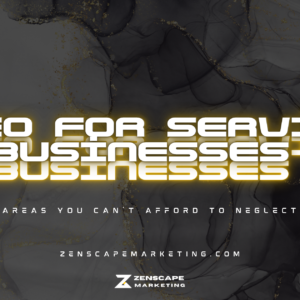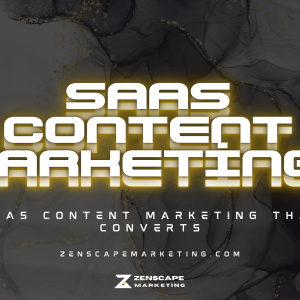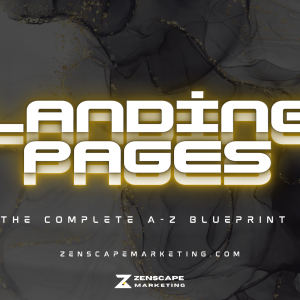Outbound digital marketing, like cold emails and intrusive ads, continues to lose effectiveness. Meanwhile, inbound marketing strategies that attract customers continue gaining momentum. That’s why smart brands aim to master inbound digital marketing as we enter 2023.
This comprehensive guide will walk you through proven inbound strategies for driving more incredible online growth this year. Follow these best practices to connect with audiences and convert leads in the digital age.
Embrace the Mindset Shift
At its core, inbound digital marketing requires a shift in mindset from outreach to attraction.
Key principles of inbound include:
– Earning attention by creating value, not buying eyeballs.
– Pulling customers in with relevant, helpful content vs. pushy promotions.
– Personalizing experiences based on interests, not demographics.
– Optimizing for the long journey vs. short-term transactions.
– Building advocacy and community around your brand purpose.
With inbound, you attract and engage ideal buyers over time through digital experiences that put their needs first.
Strategically Map the Buyer’s Journey
The foundation of impactful inbound is an intimate understanding of your customer journeys.
Key steps:
– Outline your target buyer personas with demographic and psychographic data.
– Identify your prospects’ pain points and questions across the journey.
– Map out touchpoints where personas discover, research, and evaluate solutions.
– Pinpoint motivations that trigger conversions, advocacy or any desired action.
– Spot friction points that inhibit desired behaviors to address.
With an accurate buyer journey map, you can plot targeted inbound activities to move leads through each stage.
Optimized Content Drives Every Stage
Inbound consistently creates, optimizes, and promotes content matched to each buyer journey stage.
– Blog posts, videos, tools, etc., target awareness stage needs.
– Educational guides, product content, and reviews build consideration.
– Case studies, demos, and trials influence the decision stage.
– Onboarding content, email nurturing, and community cultivate retention.
– User-generated content and referrals fuel further advocacy.
Life stage-specific content both draws prospects in and pulls them through the funnel.
Take an Always-On Approach to SEO
Search engine optimization ensures your inbound efforts are discoverable through organic search.
Best practices include:
– Optimizing pages and content for keywords aligned to buyer needs and searches.
– Curating helpful, engaging resources on your site targeting those terms.
– Earning backlinks and citations to build domain authority and relevance.
– Monitoring rankings and leveraging analytics data to improve SEO continuously.
– Staying on top of Google algorithm updates and guideline changes.
Done right, SEO generates a growing stream of qualified visitors from search year-round.
Get Social Media and Communities Humming
Social platforms and branded online communities provide excellent avenues for inbound engagement.
– Share your best content through social posts and paid ads.
– Foster sharing and participation with user-generated content campaigns.
– Monitor conversations relevant to your brand for opportunities to assist.
– Enable followers to quickly contact you and provide social care.
– Build online communities readers want to be part of.
Active social and community management brings valuable traffic while humanizing your brand.
Weave in Paid Amplification Judiciously
While primarily organic, inbound can leverage paid advertising to amplify results.
Examples include:
– Promoted social content to raise relevant reach.
– Retargeting clicks and conversions from key segments.
– PPC ads to specifically increase site traffic to gated offers and purchases.
– Display and native ads to expose new audiences to your content.
Keep paid to boost focused on expanding inbound content visibility, not sales messaging.
Obsess Over Conversion Points
Every stage of inbound strategy should optimize for micro-conversions, moving readers closer to becoming customers.
– Calls-to-action to download offers, subscribe, book demos, etc.
– Reduced form fields, frictionless checkout, and saved abandon cart flow.
– Contact forms, live chat, and phone numbers for sales inquiries.
– Easy sharing and refer-a-friend opportunities.
– Clear on-site navigation and intuitive user experience.
Removing conversion roadblocks and simplifying the next steps boost lead generation results.
Respect the Relationship
Inbound is a long game focused on nurturing relationships with prospects and customers.
– Provide ongoing value through regular content creation and community engagement.
– Build trust and advocacy through transparency and customer service.
– Show appreciation with exclusives for current subscribers and buyers.
– Surprise and delight with special touches, insider info, and sneak peeks.
– Earn referrals by exceeding expectations around support and service.
You’re building faithful fans, not just one-time buyers.
Monitor and Optimize Relentlessly
Master inbound marketers obsess over tracking data and performance indicators to optimize efforts continually.
Key inbound metrics to monitor include:
– Content engagement, downloads, and conversions
– SEO rankings and organic traffic
– Social following, shares, clicks, and overall reach
– Email open, clickthrough, and unsubscribe rates
– Form submission rates and sales cycle length
– Customer reviews, satisfaction scores, and attrition
Constant testing and improvement compounds inbound results over time.
Execute Inbound Digital Marketing at Enterprise Scale
As inbound success grows, tools and processes that streamline execution become critical.
For larger brands, martech essentials include:
– Marketing automation platforms to nurture prospects.
– CRMs centralizing customer data flows.
– BI dashboards condensing key performance metrics.
– Attribution modeling revealing tactic effectiveness.
– Integrations are tying platforms together for coordinated journeys.
– Workflows are supporting consistent cross-channel experiences.
Sophisticated tools empower enterprise brands to scale inbound marketing efficiently.
Evolve With Emerging Tactics
Always stay on top of new inbound digital marketing opportunities as they emerge.
Up-and-coming examples include:
– Leveraging artificial intelligence for content and campaign personalization.
– Tapping into viral trends with your meme marketing.
– Experimenting with digital events, both virtual and hybrid.
– Getting traction on new high-engagement social platforms.
– Adopting next-gen advertising formats like connected TV and digital out-of-home.
– Strategically embracing influencer marketing opportunities.
Cutting-edge inbound tactics can fuel exponential growth if handled skillfully.
Here is a CTA for the inbound marketing article, mentioning how Zenscape Marketing can help:
Want Help Igniting Your Inbound Strategy?
The inbound marketing experts at Zenscape are passionate about helping brands build data-driven inbound strategies tailored for their unique buyers, integrate cutting-edge tactics, and achieve inbound success at scale.
We’ve partnered with leading national and global brands to accelerate inbound performance and digital growth. Our proven process combines strategic consulting, integrated inbound execution, continuous optimization, and enterprise-level management.






